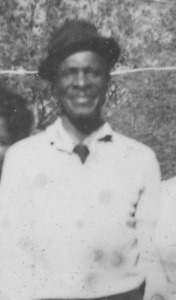December 5,1957 is the day that will live in infamy for the city of Villa Rica, Georgia. On that crisp morning about an hour before noon, a horrific explosion ripped apart a section of the business district, killing twelve, injuring a couple dozen more, and leaving indelible holes in the lives of those too numerous to count.
While memories of that fateful day have been handed down through a couple of generations, no one had ever chronicled the events for the historical record that is until now. Elaine. Bailey undertook the arduous task of sifting through the mountains of records, and also painstakingly revisiting reminiscences of survivors. She has published the findings in a monumental book entitled, Explosion in Villa Rica. The author describes her efforts as comparable to that of putting together a giant jigsaw puzzle. Only all the pieces are not there, and some don’t fit. Nevertheless, Bailey has painted an awe inspiring portrait of ordinary citizens going about their· daily lives, but then getting caught up in extraordinary circumstances that made headlines all over the world.
The story is not retold as though it happened in a vacuum. The author does a credible job of setting the stage, of putting the times in perspective. She then meticulously reconstructs the events leading up to, during, and immediately following the massive explosion.
But Bailey does not approach the subject matter from the viewpoint of a reporter just getting the facts. She rather makes it about the people who were involved. Her depictions are not those of a sensationalist trying to make a name for herself but are rendered with the compassion of a family member, still feeling the pain.
The book also deals with the aftermath, the healing, the rebuilding, and the lawsuits that tried to access blame. Bailey makes note of two very substantial changes that came about as a result of this, tragedy. The entire fledgling natural gas industry went back to the drawing boards and rewrote safety manuals. And the notion of civil defense preparedness took on a whole new significance, the department established in Villa Rica becoming a model for others to follow.
Explosion in Villa Rica is well documented and thoroughly indexed. Photographs are strategically placed throughout giving critical visuals of the scene and situation. The obituaries of the victims are included, as are quotations from news stories that covered the event.
The book is not only a keepsake for those whose lives will never be the same, but it now takes its place alongside other crucial documentaries recording the rich history of Carroll County.
- Larry G. Johnson, The Carroll Star News, December, 27th 2009
One of the unsung heros of the day was Louis Harris. Louis worked with Horace Luther, the Superintendent of the Water and Sewer Authority. Louis was on the scene immediately after the gas explosion occurred. This local man worked to pull several people out of the burning buildings. When he saw that someone had put their foot through the debris, he pulled them out by grabbing onto their leg in spite of danger to himself. He became a kind of local hero because of how long he stayed at the scene and how hard he worked. Louis is credited in stopping the gas flow from the power station to Villa Rica after the explosion. He put so much brave effort into saving others that he stayed until late to help clear the debris and haul it to the two sites where it was dumped. After working for the city in the water department, Louis served as fireman and then was the first black policeman in Villa Rica. While working at the fire department Louis lost several fingers and because of this disability he could only work part time for the city and did so until he retired.

